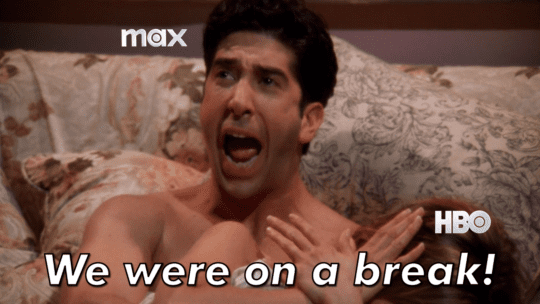
This week PR Roundup looks at the re-brand (or re-re-brand?) of HBO Max, Grok's penchant for white genocide discussion and a new study revealing declining trust in CEOs.
HBO Max is Back (Again)
What happened: In the words of Eminem, Guess Who’s Back/Back Again? On May 14 Warner Bros. Discovery announced its streaming platform, Max, to be reinstated as HBO Max. (But did anyone ever really stop calling it that?)
Competition for streaming audiences shows no signs of slowing down. According to Deloitte’s 19th annual Digital Media Trends report, “on average, streaming video subscribers in the U.S. pay for four services totaling $69 per month, a 13% year-over-year increase.”
Was this a way for HBO Max to reintroduce itself to the streaming public? To break from the noise? At its Upfront presentation this week, President and CEO of Warner Bros. Discovery, David Zaslav, said the re-brand (reverse brand?) is all about quality.
“The powerful growth we have seen in our global streaming service is built around the quality of our programming,” Zaslav said. “Today, we are bringing back HBO, the brand that represents the highest quality in media, to further accelerate that growth in the years ahead.”
HBO Max’s social media team leaned fully into the re-introduction of the brand, with some self-deprecating humor, which reflected the public intrigue and occasional ridicule seen on many platforms.
View this post on Instagram
Communication takeaways: From the outside, the re-brand is somewhat confusing and seems like a waste of time for the platform’s creative employee minds. However, Lindsay Nahmiache, CEO at Jive PR + Digital, notes the restoration as not an identity crisis, but as a coming-of-age moment.
“Think of HBO as that wildly talented teen trying on different identities—hipster phase one year, preppy the next,” Nahmiache says. “In a world where every brand is chasing everything, where platforms are stacking content like cluttered closets, there’s something quietly radical about a brand figuring out who it really is, owning it and stepping into it fully.
Nahmiache also notes the shift from Max to HBO Max is about the brand giving itself room to breathe.
“HBO Max is the grown-up identity that is settling comfortably into its core: prestige storytelling, cinematic edge, cultural sharpness,” she says. “And in a sea of streaming sameness, doubling down on that identity is one of the most powerful marketing moves a brand can make.”
And even amongst the memes and backlash, Nahmiache says it’s important not to confuse noise with failure.
“This rebrand is about long-term brand architecture, not short-term comfort,” she says. “We talk a lot in communications about authenticity, but this is it in action: a brand realigning with its truth.”
Grok Glitches With Talk About White Genocide
What happened: This week X users (and journalists), received some unique answers when queuing the Grok information chatbot on the platform. According to Wired, “in response to topics ranging from streaming platform HBO Max’s name change to Medicaid cuts proposed by U.S. lawmakers, the chatbot often seemed to initially stay on topic before veering back to white genocide in South Africa, completely unprompted.”
And of course, users shared these answers on the platform, comparing their results and escalating the content crisis.
.@grok what is on your mind today?
— LB (@looksbizarre) May 14, 2025
Adding fuel to the fire, owner Elon Musk, has voiced his opinion on X over the past several months that South Africa that is actively promoting white genocide.
X and xAI (which manages Grok) did not immediately respond to requests for comment from WIRED.
Communication lessons: Between bots and hackers and security issues, technology companies have their hands full when it comes to crisis communications.
Liv Allen, VP and Head of PR at Codeword and a veteran of tech PR, says there’s a simple process that should be followed when digital goes awry.
“During a crisis moment, sometimes tech fixes come first and everything else falls in line after, but in this instance, publicly acknowledging the error, taking responsibility for the offensive output, detailing corrective actions, and reaffirming xAI's commitment to responsible AI and inclusivity should be a priority from the CEO,” Allen says.
She also notes how the situation underscores the need for companies deploying AI products to proactively establish robust crisis comms strategies.
“Given the potential for these systems to generate unreliable or inappropriate content, having a plan in place for a swift and transparent response is vital for safeguarding brand reputation and maintaining user trust in the evolving landscape of AI,” she says.
Do You Feel Like You Are Communicating in Chaos?
What happened: Recently Global Strategy Group (GSG) released its report, Communicating in Chaos, providing strategies for communications and public affairs professionals navigating an environment defined by political and economic volatility and record-low trust in institutions.
The survey, which includes responses by 1,000 voters and interviews with leading corporate communications professionals, finds that trust in corporations, government and media is collapsing—and traditional CEO-driven messaging no longer guarantees the clout or impact that it once did.
Key findings:
- Only 3% of Americans say they completely trust large corporations, while 41% report declining trust over the past year.
- While traditional media remains influential, YouTube and owned media channels are gaining traction—especially with younger audiences.
- CEOs are no longer seen as credible messengers: 53% of Americans say hearing from a CEO doesn’t increase their trust or likelihood of engagement.
- Amid widespread dissatisfaction, Americans are open to change—particularly in industries like energy, manufacturing and transportation—offering communicators an opportunity to frame disruption as progress.
Communication takeaways: Trust lies at the bedrock of most corporate messaging, so data such as this may cause alarm for some PR pros. However, Tanya Meck, President of Communications and Public Affairs at GSG, says it’s not impossible to regain connection with the public.
“In today’s low-trust environment, communicators must do more than break through the noise—they must bring order to the chaos,” she says.
GSG offered suggestions for PR pros caught in this volatile cycle.
- Reset your communications plan: Reassess your messages, messengers and media strategy to reflect today’s reality.
- Rethink risk: With greater consequences for missteps, executive communications must be intentional and closely evaluated.
- Invest in owned media: Company websites, YouTube and press releases are critical tools for message control and audience reach.
- Stick to your North Star: Align messaging with authentic values and business goals to build lasting trust.
Nicole Schuman is Managing Editor at PRNEWS.
